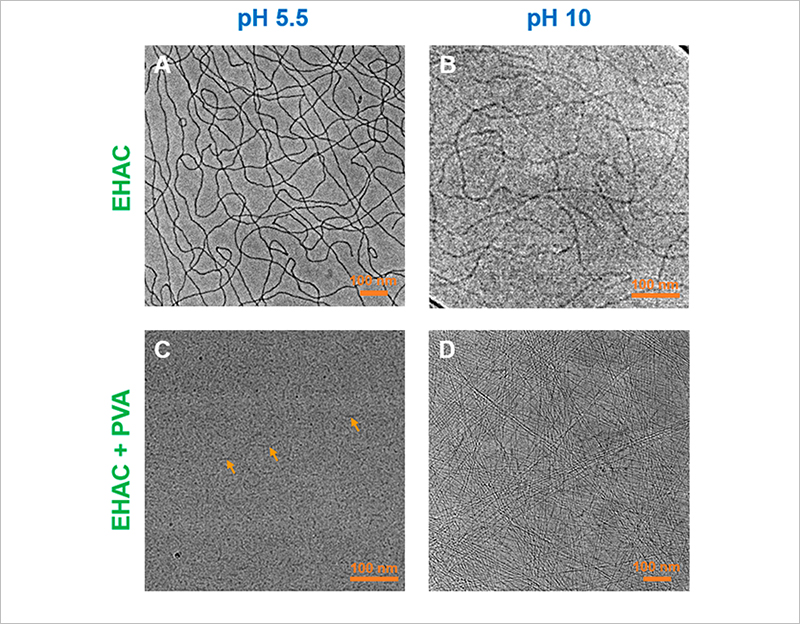On development of semi-interpenetrating polymer-micellar networks
News, 14 August 2024
A team of scientists from the Laboratory of Neutron Physics at JINR, Faculty of Physics of Moscow State University, Kurchatov Institute, and Chemistry Department of the Karaganda Buketov University (Kazakhstan) conducted research of the role of component interactions in dual semi-interpenetrating networks of water-soluble macromolecules and supramolecular polymer-like chains. The findings of the study pave the way for the development of dual semi-interpenetrating polymer-micellar networks, which are in demand in the petroleum industry.
Dual networks formed by entangled polymer chains and wormlike surfactant micelles have attracted increasing interest in their application as thickeners in various fields since they combine the advantages of both polymer- and surfactant-based fluids. In particular, such polymer surfactant mixtures are of great interest as novel hydraulic fracturing fluids with enhanced properties.
 Cryogenic transmission electron microscopy micrographs of samples of different preparation levels
Cryogenic transmission electron microscopy micrographs of samples of different preparation levels
In this study, we demonstrated the effect of the chemical composition of an uncharged polymer poly(vinyl alcohol) (PVA) and pH on the rheological properties and structure of its mixtures with a cationic surfactant erucyl bis(hydroxyethyl)methylammonium chloride already exploited in fracturing operations. Using a combination of several complementary techniques (rheometry, cryo transmission electron microscopy, small-angle neutron scattering, and nuclear magnetic resonance spectroscopy), we showed that a small number of residual acetate groups (2 12.7 mol%) in PVA could significantly reduce the viscosity of the mixed system. This result was attributed to the incorporation of acetate groups in the corona of the micellar aggregates, decreasing the molecular packing parameter and thereby inducing the shortening of worm-like micelles. When these groups are removed by hydrolysis at a pH higher than 7, viscosity increases by five orders of magnitude due to the growth of worm-like micelles in length.
An article about the study was published in Polymers in May 2024. Among the authors is the Head of the YuMO Group of the FLNP JINR Scientific and Experimental Department of Neutron Investigations of Condensed Matter Alexander Kuklin.